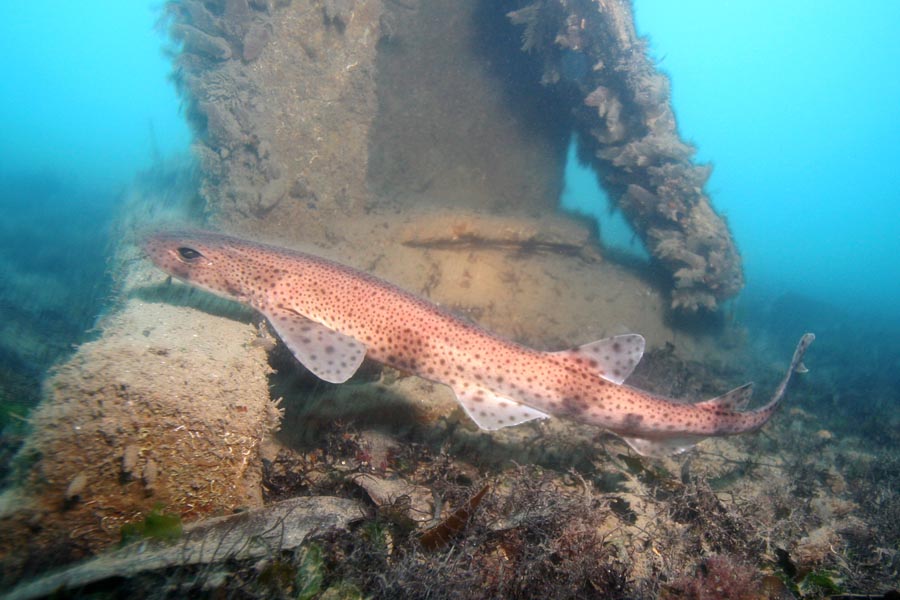Roussette Scylhiorhinus canicula
 La roussette Scylhiorhinus canicula appartient au groupe des chondrichtyens (ou poissons cartilagineux), groupe frère des ostéichtyens (ou poissons osseux). Ces deux groupes font partie des gnathostomes, vertébrés pourvus d’une bouche articulée. Ce petit requin est présent en Méditerranée, ainsi qu’en Atlantique Nord-Est.
La roussette Scylhiorhinus canicula appartient au groupe des chondrichtyens (ou poissons cartilagineux), groupe frère des ostéichtyens (ou poissons osseux). Ces deux groupes font partie des gnathostomes, vertébrés pourvus d’une bouche articulée. Ce petit requin est présent en Méditerranée, ainsi qu’en Atlantique Nord-Est.
Photo : Yann Fontana
EMBRC expertise:
Access
- Reproductively mature adults can be held in aquariums;
- Reproduction and eggs with a survival rate of more than 85% and embryos can be shipped at the desired stage.
Available tools
- Functional approaches are possible via in ovo pharmacological treatments and by micro-injection.
- Embryos are also suitable for in situ hybridisation and immunohistochemistry.
Scientific advantages of this model organism
- The catshark is a model that is particularly useful in developmental biology, evo-devo, ecotoxicology, evolutionary physiology. Its phylogenetic position confers a clear advantage for understanding the origin and diversification of gnathostomes. Interest in this species as a model is growing, including for the study of sensory organs and complex physiological characteristics, and contributes to the elucidation of evolutionary processes in vertebrates, such as gastrulation, or evolution of the forebrain. For example, the evolution of the role of the pancreas can be studied in chondrichthyans, which have a pancreas with endocrine and exocrine functions. The catshark can also be used to study the evolution of multigene families in vertebrates and their mode of evolution.
- In addition, this fish is a model that can be used to study the mechanisms of endoderm formation.
- The catshark is also a study model for germline or cancerous stem cells, based on the characteristics of its spermatogonial stem cells. Testicular anatomy provides easy access to the germline stem cell niche and the characterisation of factors involved in the regulation, self-renewal, proliferation and differentiation of spermatogonial stem cells.
- The immune system of catsharks is also under investigation. It is similar to that of humans, but catshark antibodies show resistance to the extra-cellular environment that is greater than that of human antibodies, opening avenues for use in anti-cancer therapy.
Available genetic resources
The life cycle is 7 to 8 years, making the establishment of lines very difficult.
Databases
- The genome is currently being sequenced.
- BAC and EST libraries
Potential applications
Catsharks can be used to identify therapeutic bioactive molecules. They also offer the possibility to characterise and develop molecules involved in the regulation of normal or pathological physiological functions. For example, dermatan sulphates isolated from their skin have anti-coagulant properties.





